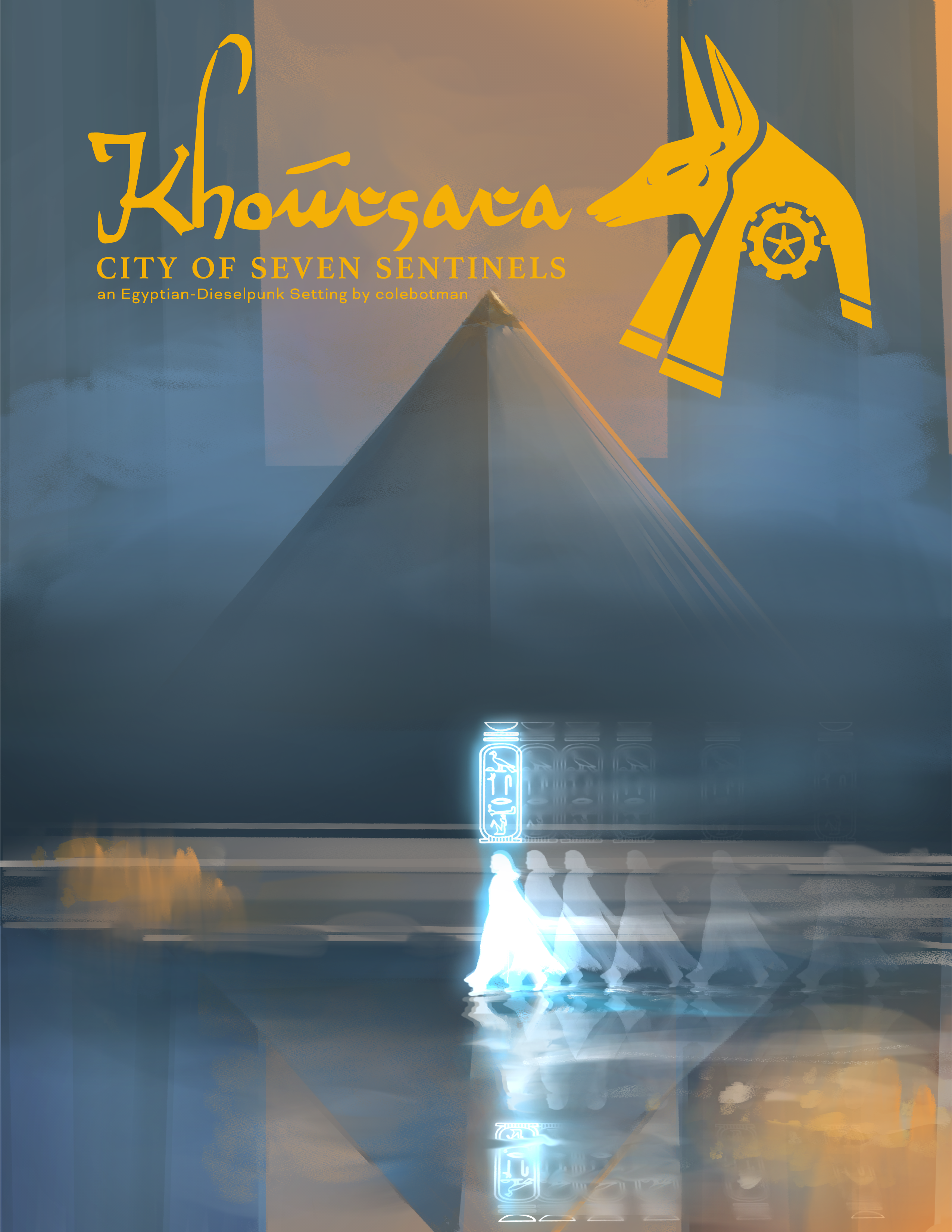

Audio By Carbonatix
“Dungeons & Dragons is one of the best things you can do with your brain,” says Denver game designer and artist Coleman Conley. “Creatively, it’s a full exercise in making stuff up, but in a way that’s coherent enough to be interesting for a whole group of people.”
Which is why Conley chose to do his Design Thesis at the University of Colorado Denver on exactly that: a D&D campaign book of his own, complete with cultural history and setting, plus additional game rules for his home-brewed world. The result of his thesis work was so comprehensive that he kept developing it post-graduation, and the result is Khoursara: City of Seven Sentinels. The setting – compatible with both D&D’s latest 5th Edition as well as Pathfinder Second Edition – is available via Kickstarter as of Thursday, May 15.

Inspired by ancient Egypt, Dieselpunk and some megalithic, holographic science fiction elements, Khoursara celebrates the incredible art history of age-old Egypt, weaving together the cultural traditions of the Predynastic, Old and New Kingdoms of ancient Egypt with present-day Egyptian-Arabic speaking Cairo. From there, it is a game world that includes new deities, character classes, monsters and magic items – all the trappings of a solid tabletop roleplaying experience.
This year, make your gift count –
Invest in local news that matters.
Our work is funded by readers like you who make voluntary gifts because they value our work and want to see it continue. Make a contribution today to help us reach our $50,000 goal!
“It really started for me because of a great art history professor, Sarah Nichols,” Conley says. “She was really good at not just telling you something, but putting it into context. It almost felt more like anthropology or archeology than just history.”
Conley – a longtime Dungeon Master for his own group of friends, and even talked about that in articles and features from his time working at the CU Denver student newspaper The Sentry – translated that passion from his education into a game experience.
“I’d always been drawn to Egypt as a setting because of its immense depth,” says Conley. “Layers upon layers upon layers of cultural history that have changed over time, but still stayed in some ways very similar to each other. That idea became central to me, that these time cycles are recurring. It gave me a lens through which to focus the setting as a whole. Cycles that shape culture, but also how culture can shape ensuing cycles. It’s a feedback loop.”
It’s a project that breaks new ground, but at the same time, possesses echoes of classic Dungeons & Dragons storylines from the 1970s and ’80s like The Lost City, in which warring cultures clash inside a city-sized ziggurat; or Expedition to the Barrier Peaks, which first combined fantasy and sci-fi elements in D&D.
“I love combining fantasy with sci-fi,” Conley admits. “I like taking some sci-fi nonsense and pushing it into my fantasy nonsense. And that led me to ask myself what if we took all these perceptions of the world from ancient Egypt and treated them like they were absolutely real and fact-based. The afterlife, the gods, the way the world works. The way we have often, with medieval fantasy. What if every cultural belief was equally true? What would that look like? What could it look like?”
An important part of any role-playing manual is the art, and Khoursara is no exception. Conley and his partner Mingi Webber are the two-person creative team in charge of the visuals, and they’re firm in their belief that AI has no role to play in their addition to the game. “It’s a shame that people are so quick to want to automate culture,” Conley says. “You can look at the finished product in almost any AI work, and frankly, it sucks.
“Obviously, that argument won’t last,” laughs Conley, “since the whole point of AI is that it learns over time to mimic human creative work more effectively. That’s the scary thing. The moment you start making something that has no reason to exist outside of creating content, you’ve failed as a society. And that’s what AI is all about: the production of content. That content is absent of any meaning, any reason why it was created outside a desire for it to exist. There’s no nod to why we write poetry, or make art, or craft fiction, or why we do anything creative. If it seems like art, it must be art. Too many people settle for that, and too many people are increasingly unaware of the difference.”
Which is why all the art within the pages of Khoursara is done by real human people, in the tradition of legendary gaming artists like David Trampier, Jeff Dee, Erol Otus and others. “If you genuinely enjoy art or writing or any human element, which is really everything, then you really should not support AI as a technology. Even just finishing an email, you’re slowly removing your tools, you’re dulling your senses, you’re getting worse and worse at the act of thinking. You’re not just replacing yourself. You’re replacing all the artists and writers and people who made these things that you’ve found cool enough to try to replicate.”
Which brings us back to what Khoursara really is: an artistic cycle in the gaming world, paying tribute to what has come before by striking new ground with the old ways in mind.
Khoursara: City of Seven Sentinels debuted its Kickstarter on May 15.